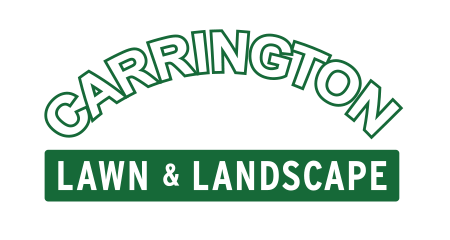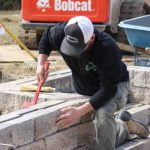Watering Instructions for New Grass Seed
We have properly prepared the seed bed with shredded topsoil and applied plenty of seed and
fertilizer. Some simple maintenance is required on your part to enable the grass seed to germinate and
grow.
Patience is required for the seed to germinate and grown into health turf. Some seed germination may
occur within a week, which are usually the annual grass varieties. While other species, like Bluegrasses,
will start to germinate in about 4 weeks. Young seedlings only have a few short roots and are very
fragile. Proper care is required for the roots to extend into the soil and the leaves to spread and
mature. Below are some guidelines to help you through this task:
Do I need to water the seed?
Watering is critical for seed success. The seed bed must be kept consistently moist at all times which will require
light but frequent watering. It might take two or three waterings per day to achieve, especially on hot, dry,
and/or windy days. Be careful to not water too much or you may cause some soil and seed to wash away. Since
young grass plants can easily die if the soil dries out, these frequent watering must be continued for a couple of
weeks after germination. Once there is good grass coverage, the length of watering time can be increased with
reducing the frequencies. This will encourage the roots to mature and grow more deeply.
Some danger signs to be aware of include:
- If grass does not come up uniformly, you may not be supplying water evenly and/or consistently.
- If you are experiencing run-off, you are watering too much.
- If the grass germinates but then begins to turn brown in areas, you will need to water more to keep the
soil moist and prevent new plants from dying.
Can I walk on the seed?
A moist lawn with young seedlings can be damaged very easily. People and pets should stay off the
new lawn area. Once established, you can begin to use the lawn normally.
When should I mow the new lawn?
When the new seedlings are about 3” tall, stop watering temporarily so the lawn area can firm up.
Mow with a light push mower, set at a 2 1⁄2” mow height, that has sharp blades and collect the clippings.
Repeat this on a weekly basis and be sure to water after each mowing.
Is my lawn growing normal?
Producing at least five grass plants within 1 square foot is considered a successful germination. These
individual plants will grow and spread to produce a thick lawn. As your grass seeds germinate, so will
weeds. Broadleaf weeds are normal and are to be expected. Do not spray the weeds with a herbicide,
young grass seedlings will be damaged and likely killed from a weed killer application. Herbicides can
be applied after the lawn has been mowed 6 times.
Other Tips
- A rain gauge can help monitor rainfall received and how much manual water has been applied.
- Straw mats are used in turf establishment to prevent erosion and help retain moisture. The netting is
rated to disintegrate within 90 days of installation and should not be physically removed. Pulling up the
straw mat will pull out the new seedlings. - If the mat is heaving in areas, do not mow over since it will get caught in the blades and leave you with a
headache to deal with. The heaved areas of straw mat can be cut out with a sharp utility knife. - Growing grass will be hungry and it should have 4 applications of slow release starter fertilizer applied in
its first full year. Be sure to water after all fertilizer applications.
These guidelines outline general best practices. Specific situations may require these guidelines to be altered.
Please contact us at (608) 821-0322 or info@carringtonlawn.com with questions or concerns.





